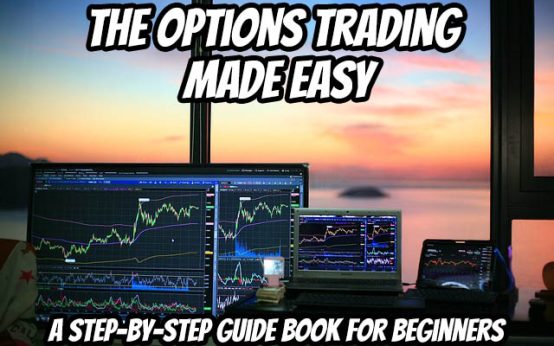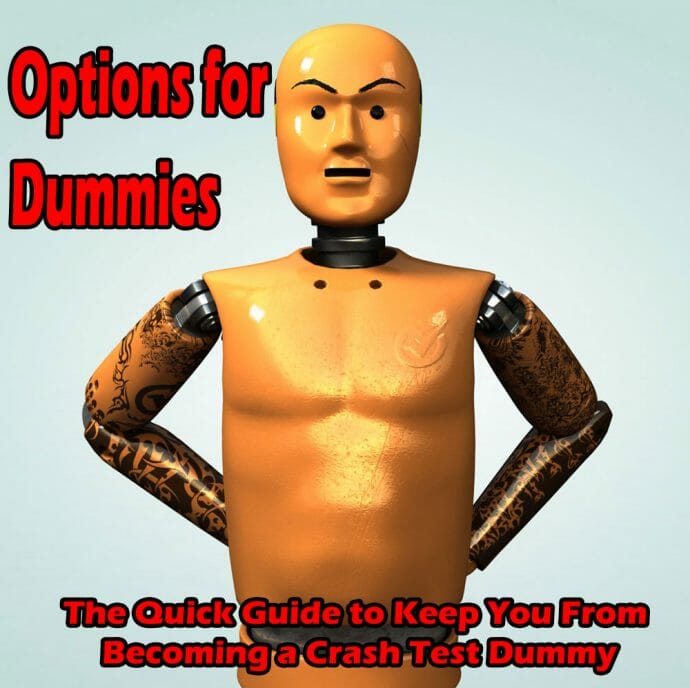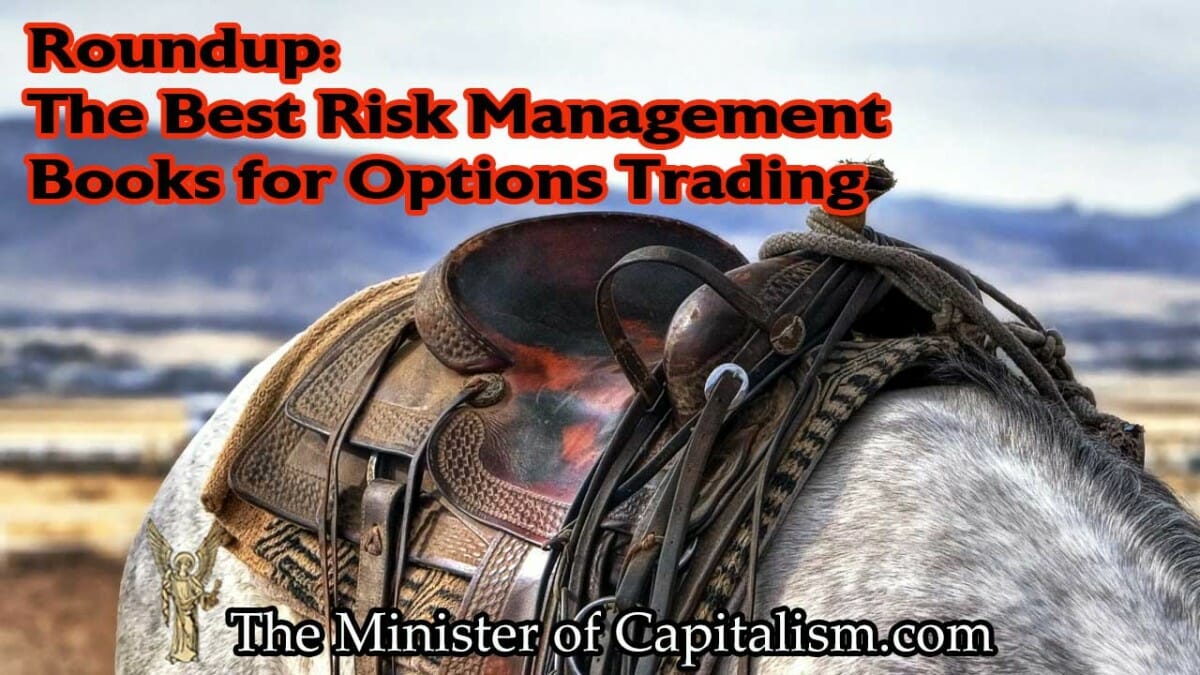Andy Tanner is a well known stock traders in the world, but to his alignment with Robert Kiyosaki. His options trading course is very popular, and many people believe it is worth the money. In this article, I take a look at the Andy Tanner option trading system and see if it is worth your time.
You can also see our list of great options trading books for beginners.
Please note, that some of the links below may be amazon affiliate links, and if you purchase something through them I may earn a small commission as a result (at no additional cost to you).

Stock Expert Spotlight – Who is Andy Tanner?
From Salt Lake City, Utah, Andy Tanner is a very successful businessman and investor. He advises Rich Dad on paper assets and is a well-known stock specialist. He is the best-selling author of two books: “Stock Market Cash Flow,” which explains how the typical investor may use the stock market to earn ongoing income rather than just buy-and-hold capital gains, and “401(k)aos,” which reveals the popular 401(k) investing plan’s hidden flaws.
What is Andy Tanner Options Trading?
Andy Tanner is a well-known options trader who has been teaching others how to trade options for over a decade. Andy Tanner’s Options Trading course is designed to teach beginners the basics of options trading and how to use different strategies to profit from movements in asset prices. The course covers everything from what an option is and how it works, to more advanced topics like volatility and Greeks.

What are the Benefits of Andy Tanner Options Trading?
According to Andy Tanner, options trading provides many benefits that other forms of trading do not. These benefits include the following:
Increased Portfolio Value
Options trading can increase portfolio value by providing stability and protection against a loss in share value. The benefits of using this strategy include increased security and the potential for higher returns on investment.
Increased Portfolio Liquidity
Increased portfolio liquidity can benefit investors by giving investors the ability to get in and out of their positions with ease.
Portfolio liquidity can help you:
- Benefit from market conditions regardless of the stock market trend
- Accumulate wealth over time through prudent investment choices.

Reduced Risk
Reduced risk can be a powerful tool for financial success. By understanding and managing the risks associated with your investments, you can achieve greater returns with less risk. Here are some of the benefits of reduced risk:
- Increased cash flow. When you reduce your overall risk, it allows you to take on more risky investment opportunities with greater potential for return. This can provide you with extra money each month that you can use however you want.
- Increased insurance protection. When your investments are spread out over many different assets, it becomes much harder for one particular event to cause significant harm to your portfolio. This is especially important in today’s volatile markets, where anything can happen at any time. Insurance policies offer some level of protection against unexpected losses so that you’re never too far from safety – no matter what happens in the market.
- Greater peace of mind. Reduced risk also gives investors a sense of assurance – knowing that they’re not exposing themselves to huge potential losses if something goes wrong makes them feel more confident about their decision-making process overall.
- More opportunity for growth and savings over time. Even small reductions in risk can lead to larger gains over time as the market gradually improves and returns on invested capital grow higher than they would have without the reduction in risk.
- Greater chances for wealth creation. Increased returns are always a good thing, but when you achieve them while minimizing risk, you’re really making some big gains. This is why reducing risk is one of the most important things that investors can do for themselves.

Reduced Volatility
Reducing volatility by using options can help you achieve your investment goals by giving you more control over the price of the stock.
- This strategy for generating income may include selling options.
- You can use options to boost your returns in a variety of ways.
- Reduced volatility can benefit your portfolio by allowing you to make more consistent investments.
- Reduced volatility is important because it reduces the chances of experiencing systemic risk.
- While diversification can help reduce your level of overall volatility, it does not protect you from systemic risk, though, so it’s important to have other strategies in place to manage these risks.
- To manage risk, you need to stop hoping and focus on specific strategies instead. You need to focus on what you can control in order to benefit from reduced volatility.
- You can control your cash flow, and exit strategy
Reduced Risk of Loss
The benefits of reducing risk of loss include increased profits. By understanding and managing the risks you face, you can reduce the chances of experiencing a loss. This can lead to greater wealth and financial security.
Some risks to consider when trading include: market volatility, systemically important companies (SICs), arbitrage, and margin calls. By taking steps to minimize these risks, you can protect yourself from potential financial losses.
In order to manage risk effectively, it is essential to have sound financial planning strategies in place. This includes having an understanding of your personal finances as well as your investment portfolio and risk tolerance levels. It is also important to have a plan for how you would respond in the event of a loss or emergency situation. For example, having an emergency fund ready might help ensure that you don’t have to resort to drastic measures such as filing for bankruptcy or selling assets at a lower value than what you paid for them.

Reduced Risk of Commission Errors
Commission errors can be reduced with Andy Tanner Options Trading when personal policies and financial education are taken into account. For example, position sizes, asset allocations, and financial education are all controllable variables.
Reduced Risk of Stock Market Crashes
Andy Tanner Options Trading can help reduce your risk of stock market crashes by focusing on what you can control. You need to stop hoping and start learning about risk management techniques, like position sizing, asset allocation, and financial education. These tools will help you manage your non-systemic risks and prevent a stock market crash from happening.
Trading Options Beginners – A Step-By-Step Guide
Step 1: Learn the Requirements and Open an Account
To get started with options trading, you need to learn the requirements and open an account with an approved trader. You can then choose a strategy based on your interests and experience. You should also predict stock price movements and determine expiration dates.
Write down your investment goals. Search for a broker to work with. The broker will assess your financial readiness and help you open an account. You can also sign up for trade alerts from a group like The Empirical Collective (as they are one of the best option alert services currently on the market) as you learn to trade.
Step 2: Decide the Type of Option
Options are a type of derivative, which is a financial contract that derives its value from an underlying asset. The most common types of options are call options and put options.
A call option gives the holder the right, but not the obligation, to buy an underlying asset at a specified price on or before a certain date. A put option gives the holder the right, but not the obligation, to sell an underlying asset at a specified price on or before a certain date.
The value of an option is determined by several factors, including the price of the underlying asset, the strike price of the option, the time to expiration, and implied volatility.
Step 3: Determine the Expiration Date
In options trading, the expiration date is the last day that an options contract is valid. After this date, the contract ceases to exist and can no longer be traded. If you own an options contract, you must either sell it before the expiration date or let it expire.
Most options contracts are for one month, but some are for longer periods of time. The expiration date is usually set by the exchange on which the option is traded. For example, if you buy a call option on ABC stock with a May expiration date, that means the option will expire on May 31st.
If you don’t sell your option before the expiration date, there are two possible outcomes. If the stock price is above the strike price on a call option, or below the strike price on a put option, then you will exercise your option and make a profit.
Step 4: Predict the Stock Price Movement
In order to predict the stock price movement when trading options, it is important to understand how options are priced and the factors that affect their value. The price of an option is determined by the underlying asset’s price, the strike price, time until expiration, volatility, and interest rates. By understanding how these factors affect option prices, traders can make more informed decisions about which options to buy or sell.
One way to predict the stock price movement is to use a pricing model such as the Black-Scholes model. This model takes into account all of the factors that affect option prices and can be used to estimate what an option should be worth. Another way to predict stock price movements is to use technical analysis. Technical analysis looks at past price data to try to identify patterns that may repeat in the future.

What is Options Trading?
Options trading is a type of trading that allows investors to speculate on the future price of an asset without actually owning the asset. Options contracts give the holder the right, but not the obligation, to buy or sell an underlying asset at a specified price on or before a certain date.
There are two types of options: calls and puts. A call option gives the holder the right to buy an underlying asset at a specified price on or before a certain date. A put option gives the holder the right to sell an underlying asset at a specified price on or before a certain date.
Options trading is a popular way to hedge against risk and can be used to speculate on future price movements in both directions. Many investors use options to protect their portfolios from downside risk, while still allowing for upside potential.
Frequently Asked Questions
What is andy tanner cash flow academy?

Andy Tanner Cash Flow Academy is an online course that teaches you how to manage your money and create a budget. The course is divided into four modules: Income, Expenses, Savings, and Investments.
Income: In this module, you will learn how to track your income and make sure that you are receiving all of the money that you are entitled to. You will also learn how to create a budget so that you can see where your money is going each month.
Expenses: This module will teach you how to track your expenses and make sure that you are not spending more than you can afford. You will also learn how to negotiate with creditors so that you can get lower interest rates and monthly payments.
Savings: This module will teach you how to save money so that you can have a cushion in case of an emergency.
What is cash flow in options trading?

In options trading, cash flow is the net amount of cash and cash equivalents being transferred into and out of a company. It is a measure of a company’s liquidity and its ability to pay bills and meet obligations.
Options traders use cash flow to gauge a company’s financial health and make decisions about whether to buy, sell, or hold its stock. A company with strong cash flow is typically seen as being more financially stable than one with weak cash flow.
There are two types of cash flow: operating cash flow and free cash flow. Operating cash flow measures the net amount of cash generated by a company’s day-to-day operations. Free cash flow measures the net amount of cash available after all capital expenditures have been made.
Both operating and free cash flow are important indicators of a company’s financial health.
How do you get cash flow from stocks?

There are a number of ways to get cash flow from stocks. One way is to simply buy shares of a company that pays regular dividends. Another way is to buy shares of a company and then sell them when the share price goes up. Finally, you can also short-sell stocks, which means selling shares you do not own in hopes of buying them back at a lower price so you can pocket the difference.
How to make money with options trading?

Assuming you have some money to start with, there are two main ways to make money through options trading. The first is by buying options contracts and selling them later at a higher price. To increase their odds of success, most people join a group like The Empirical Collective to get trade alerts & ideas. The second way is by writing options contracts and collecting the premiums when they expire. This is riskier but can be more profitable if done correctly.
Options trading can be a great way to make money, but it’s important to understand the risks involved. You can lose money just as easily as you can make it, so it’s important to educate yourself before getting started. There are plenty of resources out there, so take your time and find ones that you trust.
What are the best books for trading options?

Picking the right book on options trading is crucial for success in this highly technical, fast-paced field. While there are many excellent books that focus on specific aspects of trading options, the three books below are our top picks for providing a well-rounded introduction to the subject.
The Bible of Options Strategies: The Definitive Guide for Practical Trading Strategies by Guy Cohen is our top pick overall. This book covers everything from the basics of call and put options to more complex topics like spreads, straddles, and iron condors. Cohen does an excellent job of explaining complicated concepts in simple language, making this an ideal choice for beginners. Option Volatility & Pricing: Advanced Trading Strategies and Techniques by Sheldon Natenberg is our pick for more advanced traders.

 The Options Trading Made Easy: A Step-by-Step Guide Book for Beginners
The Options Trading Made Easy: A Step-by-Step Guide Book for Beginners  The 10 Best Options Trading Books for Beginners
The 10 Best Options Trading Books for Beginners  Best Options Trading Books For Beginner – Which Book Should You Read To Increase Your Trading Skills?
Best Options Trading Books For Beginner – Which Book Should You Read To Increase Your Trading Skills?  Options for Dummies – Trading Options for Dummies Guide
Options for Dummies – Trading Options for Dummies Guide  Trading Options for Dummies Book: The Overview New Traders Need to Read
Trading Options for Dummies Book: The Overview New Traders Need to Read  Best risk management books for options trading: The ultimate guide to Managing Your Financial Risk
Best risk management books for options trading: The ultimate guide to Managing Your Financial Risk